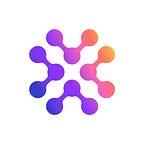Your Ultimate Guide to Decentralized Applications
Most of the services we know and use in our daily lives are centralized, meaning they are managed and controlled by a specific entity, whether a corporation or a government-run company.
Every transaction made through a bank is checked and validated by authorized personnel, and every visit to a doctor is assisted by both the physician and the clinic — for appointments, records, and prescriptions.
Unlike those services, Decentralized Applications or dApps are not controlled by a specific entity.
Some other services are more hybrid — such as Meta platforms — in which we send messages directly, encrypted, without them being accessed by anyone else in the meantime. But even then, the complete messaging service is compromised if the server goes down. With the technology of Blockchain, we have a much more decentralized system than we are accustomed to, and one recent invention is the decentralized application (dApp).
What are dApps exactly?
Decentralized applications, or dApps, are digital applications similar to the ones we already use. Still, instead of being managed by companies, they operate on the Blockchain and are entirely decentralized, allowing for direct peer-to-peer communication. The data transfer occurs through smart contracts recorded on the Blockchain, so dApps function autonomously, similar to a decentralized autonomous organization (DAO). Given the technological innovation at the core of this invention, they have gained attention from the public, who wants to avoid relying on a single server or centralized source for personal information, messages, emails, or many other things that are preferred to be kept private.
How do they work, and what do they do?
dApps exist on the Blockchain through smart contracts and operate without third-party intervention, using the network’s native utility tokens. These tokens allow for ownership of a portion of the application by the person who uses it, making it a community-based system. Identification codes for decentralized applications can only function on one platform — often, these are special websites with custom codes. Depending on the application’s traffic, fees are also paid (such as gas in the case of the Ethereum Blockchain).
Transactions made through smart contracts are immutable and cannot be changed, deleted, or modified — but if we do not select the correct options or do not have enough funds, the transaction will not go through the system. The smart contracts will cancel it before taking place.
On which types of Blockchain networks can they operate?
dApps operate on distributed, public, and open-source databases, completely transparent. Because it is similar in concept to a DAO, this transparency is necessary for users to directly and openly participate in transactions or information exchanges on the applications.
The security of the applications is primarily maintained by the fact that each user holds a share, without the possibility of sabotage, similar to the Proof-of-Stake model used by Ethereum or other networks that use this consensus mechanism. Given that smart contracts are necessary for the applications to function, dApps can operate on networks that use the Proof-of-Stake mechanism. Consensus algorithms work with the required protocols for Blockchain network nodes to make changes within them.
The advantages and disadvantages of decentralized applications
The benefits observed are preserving anonymity and protecting identity or personal data, with only the need for a digital wallet. It is also the platform where we cannot be censored, so freedom of expression is at home, whether we’re talking about the freedom to protest against a government or the choice to broadcast online what we think.
All information is supported by the same cryptographic technology behind all cryptocurrencies, meaning that transactions cannot be hacked unless the entire Blockchain network is broken. This is extremely unlikely, although not impossible, given the technical difficulty of breaking the network.
The disadvantages of decentralized applications revolve around their experimental stage, with concerns about the possibility of scaling to a high level and the users’ intentions for using the platform. The interface is another aspect to consider, as it needs to be as user-friendly as possible for as many people to use it in real-life cases — video games, social networks, and so on.
Anyone can become an investor. Globally, cryptocurrencies represent an emerging asset class, with the number of investors growing continuously. Within the ixfi platform, we are building a crypto community where everyone is welcome. We mean it when anyone can be an investor: create an account on ixfi today and benefit from over 350 cryptocurrencies and exclusive rewards offered through monthly promotional campaigns.
